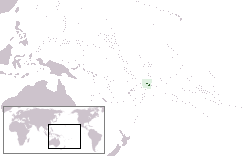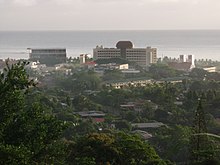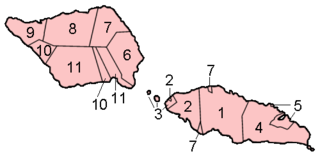Samoa | |||||||||||||||||||||||||||||||||||||||||||||||||||||||||||||||||||||||||||||||||||||||||||||||||||||||
| Samoa Telephones - Find Mobile Phones, Internet. Country Code | |||||||||||||||||||||||||||||||||||||||||||||||||||||||||||||||||||||||||||||||||||||||||||||||||||||||
| Calling code + 685 | |||||||||||||||||||||||||||||||||||||||||||||||||||||||||||||||||||||||||||||||||||||||||||||||||||||||
| Internet Domain name TLD : .ws | |||||||||||||||||||||||||||||||||||||||||||||||||||||||||||||||||||||||||||||||||||||||||||||||||||||||
| Samoa | |||||||||||||||||||||||||||||||||||||||||||||||||||||||||||||||||||||||||||||||||||||||||||||||||||||||
| Regulator Office of the Regulator of Samoa - Telecommunications regulator - telecom companies and systems | |||||||||||||||||||||||||||||||||||||||||||||||||||||||||||||||||||||||||||||||||||||||||||||||||||||||
| Malo Sa'oloto Tuto'atasi o Samoa Independent State of Samoa | |||||||||||||||||||||||||||||||||||||||||||||||||||||||||||||||||||||||||||||||||||||||||||||||||||||||
Flag 

| |||||||||||||||||||||||||||||||||||||||||||||||||||||||||||||||||||||||||||||||||||||||||||||||||||||||
Location of Samoa 
| |||||||||||||||||||||||||||||||||||||||||||||||||||||||||||||||||||||||||||||||||||||||||||||||||||||||
| Capital Apia Map Latitude 13°50′S - Longitude 171°45′W / 13.833°S 171.75°W / -13.833;-171.75 | |||||||||||||||||||||||||||||||||||||||||||||||||||||||||||||||||||||||||||||||||||||||||||||||||||||||
| Official language(s) : Samoan, English | |||||||||||||||||||||||||||||||||||||||||||||||||||||||||||||||||||||||||||||||||||||||||||||||||||||||
| People : Samoans | |||||||||||||||||||||||||||||||||||||||||||||||||||||||||||||||||||||||||||||||||||||||||||||||||||||||
| Government : Parliamentary republic | |||||||||||||||||||||||||||||||||||||||||||||||||||||||||||||||||||||||||||||||||||||||||||||||||||||||
| Head of State (O le Ao o le Malo) : Tufuga Efi | |||||||||||||||||||||||||||||||||||||||||||||||||||||||||||||||||||||||||||||||||||||||||||||||||||||||
| Prime Minister : Tuilaepa Aiono Sailele Malielegaoi | |||||||||||||||||||||||||||||||||||||||||||||||||||||||||||||||||||||||||||||||||||||||||||||||||||||||
| Independence - from New Zealand on 1 January 1962 | |||||||||||||||||||||||||||||||||||||||||||||||||||||||||||||||||||||||||||||||||||||||||||||||||||||||
| Total Area 2,831 km ( 1,093 sq mi) | |||||||||||||||||||||||||||||||||||||||||||||||||||||||||||||||||||||||||||||||||||||||||||||||||||||||
| Population 2009 estimate 179,000 - 2006 census 179,186 - Density 63.2/km (163.7/sq mi) | |||||||||||||||||||||||||||||||||||||||||||||||||||||||||||||||||||||||||||||||||||||||||||||||||||||||
| GDP 2009 estimate - Total $1.049 billion - Per capita $5,782 | |||||||||||||||||||||||||||||||||||||||||||||||||||||||||||||||||||||||||||||||||||||||||||||||||||||||
| GDP (nominal) - 2009 estimate - Total $558 million - Per capita $3,077 | |||||||||||||||||||||||||||||||||||||||||||||||||||||||||||||||||||||||||||||||||||||||||||||||||||||||
| Currency : Samoan tala (WST) | |||||||||||||||||||||||||||||||||||||||||||||||||||||||||||||||||||||||||||||||||||||||||||||||||||||||
| Time zone : UTC -11 | |||||||||||||||||||||||||||||||||||||||||||||||||||||||||||||||||||||||||||||||||||||||||||||||||||||||
| The Independent State of Samoa (formerly known as Western Samoa and German Samoa), is a country governing the western part of the Samoan Islands in the South Pacific Ocean. It became independent from New Zealand in 1962. The two main islands of Samoa are Upolu and one of the biggest islands in Polynesia Savai'i. The capital city Apia and Faleolo International Airport are situated on the island of Upolu. | |||||||||||||||||||||||||||||||||||||||||||||||||||||||||||||||||||||||||||||||||||||||||||||||||||||||
| History | |||||||||||||||||||||||||||||||||||||||||||||||||||||||||||||||||||||||||||||||||||||||||||||||||||||||
| History of Samoa | |||||||||||||||||||||||||||||||||||||||||||||||||||||||||||||||||||||||||||||||||||||||||||||||||||||||
| Archaeology in Samoa | |||||||||||||||||||||||||||||||||||||||||||||||||||||||||||||||||||||||||||||||||||||||||||||||||||||||
| The Samoans originated from Austronesian predecessors during the terminal eastward Lapita expansion period from Southeast Asia and Melanesia approximately 1500 BCE. ] The Samoan origins are currently being reassessed due to new scientific evidence and carbon dating findings from 2003 and onwards.
Intimate sociocultural and genetic ties were maintained between the eastern Lapita colonies and the archaeological record supports oral tradition and native genealogies that indicate inter-island voyaging and intermarriage between prehistoric Samoans, Fijians, and Tongans. 
| Samoan girls making 'ava c. 1911
| 
| Interior of Samoan house, Apia, Urville 1842
| Contact with Europeans began in the early 18th century. Jacob Roggeveen (1659–1729), a Dutchman, was the first known European to sight the Samoan islands in 1722. This visit was followed by a French explorer by the name of Louis-Antoine de Bougainville (1729–1811), the man who named them the Navigator Islands in 1768. Contact was limited before the 1830s which is when English missionaries and traders began arriving. Mission work in Samoa had begun in late 1830 by John Williams, of the London Missionary Society arriving in Sapapali'i from The Cook Islands &Tahiti. 7 - By that time, the Samoans had gained a reputation of being savage and warlike, as violent altercations had occurred between natives and French, British, German and American forces, who, by the late nineteenth century, valued Samoa as a refueling station for coal-fired shipping and whaling.
| 
| Wilhelm Solf, German governor of Samoa 1900-1910
| 
| Mata'afa Iosefo (1832-1912) paramount chief &rival for the kingship of Samoa
| The Germans in particular began to show great commercial interest in the Samoan Islands, especially on the island of 'Upolu where German firms monopolized copra and cocoa bean processing;the United States laid its own claim and formed alliances with local native chieftains, most conspicuously on the islands of Tutuila and Manu'a (which were later formally annexed to the USA as American Samoa). Britain also sent troops to protect British business enterprise, harbor rights, and consulate office. There followed an eight-year civil war, where each of the three powers supplied arms, training, and in some cases, combat troops to the warring Samoan parties. All three sent warships into Apia harbour, and a larger-scale war seemed imminent, until a massive storm damaged or destroyed the warships, ending the military conflict. 8 - At the turn of the twentieth century, the Tripartite Convention partitioned the Samoan Islands into two parts: 9 - the eastern island group became a territory of the United States (the Tutuila Islands in 1900 and officially Manu'a in 1904) and is today known as American Samoa;the western islands, by far the greater landmass, became known as German Samoa after Britain vacated all claims to Samoa and accepted termination of German rights in Tonga and certain areas in the Solomon Islands and West Africa. 10 - The first German Governor was Wilhelm Solf who later went on to become Secretary for the Colonies of Imperial Germany. New Zealand troops landed on 'Upolu unopposed on 29 August 1914 and seized control from the German authorities, following a request by Britain for New Zealand to perform their "great and urgent imperial service." 11 - |
In 1912, one of the changes, the German administration had apparently achieved its long-term objectives of understanding the traditional forces in Samoa politics, while maintaining a semblance of local participation in government. There was no more Tupu , nor even alii sili , but the two Fautua were appointed. Tumua and Pule were for a time silence;all decisions on matters affecting lands and titles were under the control of the Governor. To complete the process, the Fa’alupega for all Samoa was revised. The Fa’alupega which had been nationally accepted from at least the late 19th century (and probably for much longer than that) was as follows:
" Tulouna a Tumua ma Pule ,
This Fa’alupega firstly recognized the authority and identity of principal districts of Samoa through their spokesmen – Tumua ma Pule, Itu’au ma Alataua, Aiga-i-le-Tai, ma le Va'a-o-Fonoti – and the highest titles which were bestowed by these groups. It concludes with the recognition of the great maximal descent groups of Samoa and their “sons” who had been chosen to hold the highest titles.
The new Fa’alupega of German Samoa apparently required for Malietoa Tanunafili and Tupua Tamasese to be sworn on oath and to change this Samoa’s historical Fa’alupega to the new fa’alupega as follows:
" Tulouna a lana Maiesitete le Kaisa o le tupu mamalu o lo tatou malo kasialika aoao . 
| Exiled orator Lauaki Namulauulu Mamoe
| From the end of World War I until 1962, New Zealand controlled Samoa as a Class C Mandate under trusteeship through the League of Nations. 12 - There followed a series of New Zealand administrators who were responsible for two major incidents. In the first incident, approximately one fifth of the Samoan population died in the Influenza epidemic of 1918-1919. 13 - In 1919 The Royal Commission of Inquiry into the Epidemic concluded that there had been no epidemic of pneumonic influenza in Western Samoa before the arrival of the 'SS Talune' from Auckland on the 7 November 1918, [which was allowed to berth by the NZ administration in breach of quarantine];that within seven days of this ship's arrival influenza had become epidemic in Upolu and had then spread rapidly throughout the rest of the territory. 14 -
| 
| People in attendance at Tupua Tamesese's funeral.
| The second major incident arose out of an initially peaceful protest by the Mau (literally translates as "strongly held opinion"), a non-violent popular movement which had its beginnings in the early 1900s on Savai'i and led by Lauaki Namulauulu Mamoe, an orator chief deposed by Solf. In 1909, Lauaki was exiled to Saipan and died en route back to Samoa in 1915. |
By the late 1920s the resistance movement against colonial rule had gathered widespread support during the mistreatment of the Samoan people by the New Zealand administration. One of the Mau leaders was Olaf Frederick Nelson, a half Samoan and half Swedish merchant. 15 - Nelson was eventually exiled during the late 1920s and early 1930s, but he continued to assist the organization financially and politically. In following the Mau's non-violent philosophy, the newly elected leader, High Chief Tupua Tamasese Lealofi, led his fellow uniformed Mau in a peaceful demonstration in downtown Apia on 28 December 1929. 16 - The New Zealand police attempted to arrest one of the leaders in the demonstration. When he resisted, a struggle developed between the police and the Mau. The officers began to fire randomly into the crowd and a Lewis machine gun, mounted in preparation for this demonstration, was used to disperse the Mau. 17 - Chief Tamasese was shot from behind and killed while trying to bring calm and order to the Mau demonstrators, screaming "Peace, Samoa". Ten others died that day and approximately 50 were injured by gunshot wounds and police batons. 18 - That day would come to be known in Samoa as Black Saturday. The Mau grew, remaining steadfastly non-violent, and expanded to include a highly influential women's branch. After repeated efforts by the Samoan people, Western Samoa gained independence in 1962 and signed a Friendship Treaty with New Zealand. Samoa was the first country in the Pacific to become independent.
In 2002, New Zealand's prime minister
Helen Clark, on a trip to Samoa, formally apologised for New Zealand's role in these two incidents. 19 - 20 -
In July 1997, the constitution was amended to change the country's name from Western Samoa to Samoa . 21 - The U.S. territory of American Samoa protested the move, asserting that the change diminished its own identity. American Samoans still use the terms Western Samoa and Western Samoans to describe the independent State of Samoa and its inhabitants. While the two Samoas share language and ethnicity, their cultures have recently followed different paths, with American Samoans often emigrating to Hawaiʻ i and the U.S. mainland, and adopting many U.S. customs, such as the playing of American football and baseball. Western Samoans have tended to emigrate instead to New Zealand, whose influence has made the sports of rugby and cricket more popular in the western islands. Travel writer Paul Theroux noted that there were marked differences between the societies in Samoa and American Samoa.
Effective 7 September 2009, the government has changed the driving orientation for motorists and Samoans now drive on the left side of the road. This brings Samoa into line with many other countries in the region. Samoa is the first country in recent years, and the first country in the 21st century, to switch to driving on the left. 22 -
This article is part of the series:
The unicameral legislature (Fono) consists of 49 members serving 5-year terms. Forty-seven are elected from territorial districts by ethnic Samoans;the other two are chosen by non-Samoans with no chiefly affiliation on separate electoral rolls. 25 - Universal suffrage was extended in 1990, but only chiefs (matai) may stand for election to the Samoan seats. There are more than 25,000 matais in the country, about 5% of whom are women. 26 - The prime minister is chosen by a majority in the Fono and is appointed by the head of state to form a government. The prime minister's choices for the 12 cabinet positions are appointed by the head of state, subject to the continuing confidence of the Fono.
Prominent women in Samoan politics include the late Laulu Fetauimalemau Mata'afa (1928–2007) from Lotofaga constituency, the wife of Samoa's first prime minister. Their daughter Fiame Naomi Mata'afa is a paramount chief and a long-serving senior member of cabinet. Other women in politics include Samoan scholar and eminent professor Aiono Fanaafi Le Tagaloa, orator-chief Matatumua Maimoana and Safuneitu'uga Pa'aga Neri, the current Minister of Communication and Technology.
The judicial system is based on English common law and local customs. The Supreme Court of Samoa is the court of highest jurisdiction. Its chief justice is appointed by the head of state upon the recommendation of the prime minister.
The capital village of each district administers and coordinates the affairs of the district and confers each districts' paramount title, amongst other responsibilities. For example, the District of A'ana has its capital at Leulumoega. The paramount title of A'ana is the TuiA'ana. The orator group which confers this title - the Faleiva (House of Nine) - is based at Leulumoega. This is also the same for the other districts. In the district of Tuamasaga, the paramount title of the district - The Malietoa title - is conferred by the FaleTuamasaga based in Afega.
Upolu (including minor islands
|




